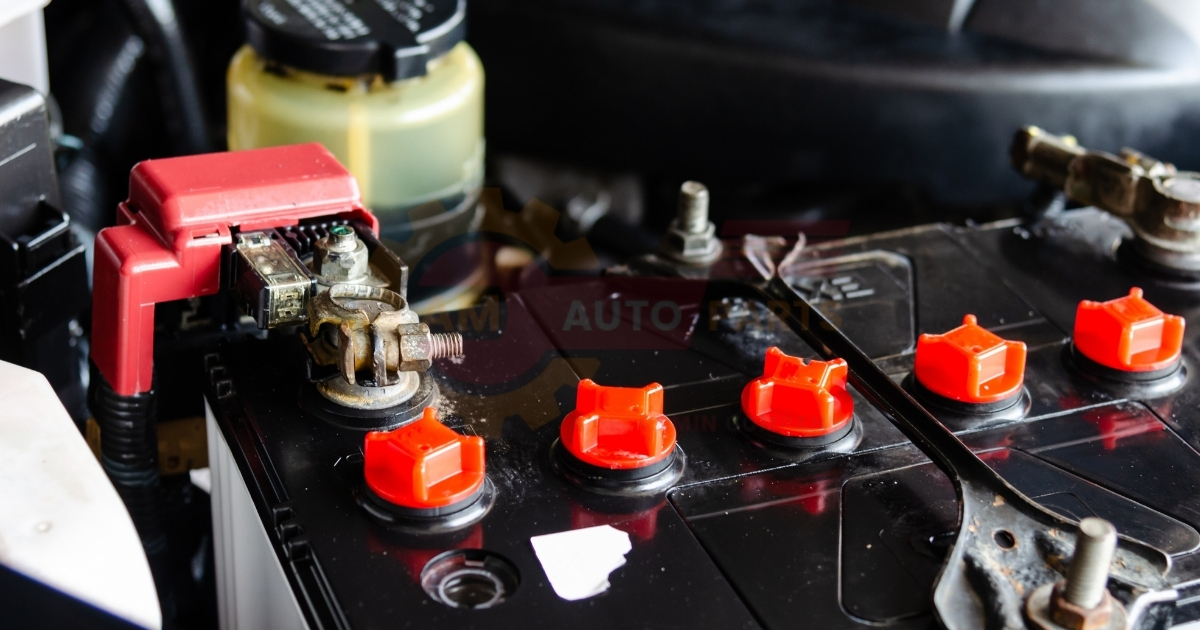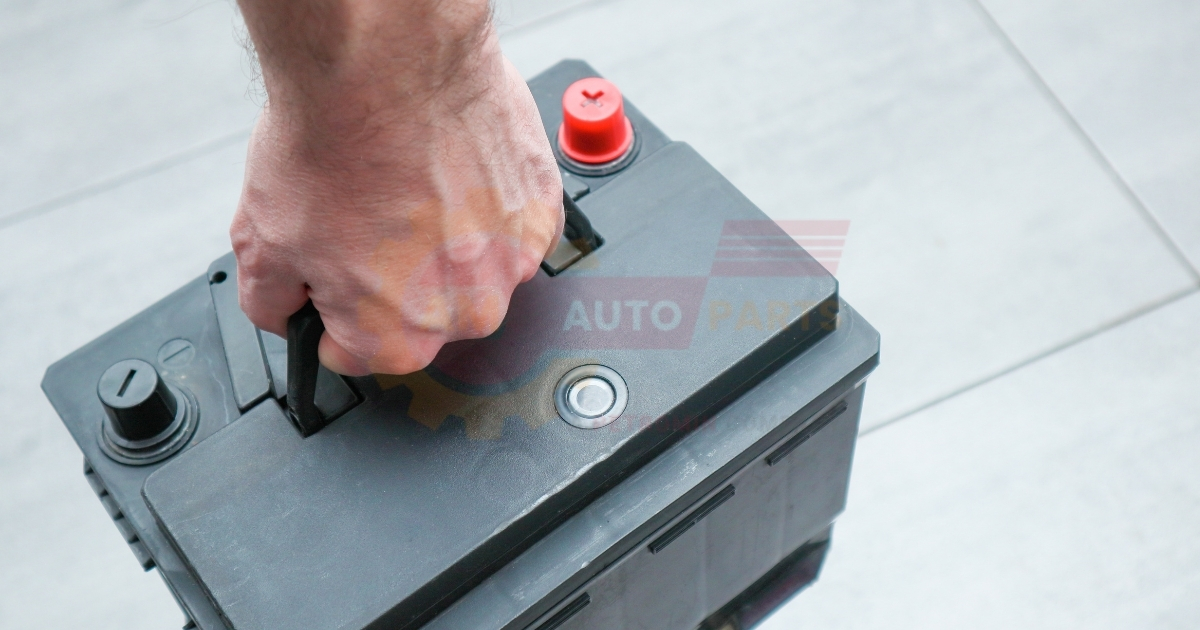What Percentage Should Car Battery Be Replaced: A Comprehensive Guide
Measuring Battery Health in Percentages
Car battery health is typically measured in percentages, representing the battery’s current capacity compared to its original state. This measurement is crucial for determining when a battery needs replacement. A fully charged, healthy battery should have a capacity close to 100%.
As batteries age and undergo charge-discharge cycles, their capacity gradually decreases. Understanding this decline helps car owners make informed decisions about when to replace their batteries. Regular monitoring of battery health can prevent unexpected failures and ensure optimal vehicle performance.
- Key factors in battery health measurement:
- Voltage levels
- Cold Cranking Amps (CCA)
- Reserve Capacity (RC)
- Internal resistance
Ideal Battery Capacity Range
The ideal battery capacity range for optimal vehicle performance is typically between 90% and 100%. However, batteries can still function effectively at lower percentages. Most experts agree that a car battery should be replaced when its capacity falls below 70%.
Maintaining your battery within this ideal range ensures reliable starts and proper functioning of your vehicle’s electrical systems. It’s important to note that even a battery at 80% capacity may struggle in extreme weather conditions or with high electrical demands.
Battery Capacity | Performance Level |
90-100% | Excellent |
80-89% | Good |
70-79% | Fair |
Below 70% | Poor – Replace |
Signs Your Car Battery Needs Replacement
Decreased Cold Cranking Amps (CCA)
Cold Cranking Amps (CCA) is a critical measure of a battery’s ability to start an engine in cold temperatures. As a battery ages, its CCA rating decreases, making it harder to start the vehicle, especially in winter. A significant drop in CCA is a clear indicator that your battery may need replacement.
Regular testing of your battery’s CCA can help you anticipate when replacement is necessary. Many auto parts stores, including AM Autoparts, offer free battery testing services that can measure CCA and overall battery health.
- Signs of decreased CCA:
- Slow engine cranking in cold weather
- Need for multiple attempts to start the engine
- Dimming headlights during startup
Slow Engine Start
A slow engine start is often one of the first noticeable signs that your car battery is nearing the end of its life. If you notice that your engine takes longer to turn over or requires multiple attempts to start, it’s time to check your battery’s health.
This symptom is particularly important to address promptly, as it can leave you stranded if the battery fails completely. Regular maintenance and early detection of slow starts can help you avoid inconvenient breakdowns.
Electrical System Issues
As a car battery weakens, it may struggle to power all of the vehicle’s electrical components effectively. This can manifest in various ways, from dimming headlights to malfunctioning power windows or radio issues.
If you notice any of these electrical problems, especially if they occur intermittently or worsen over time, it’s crucial to have your battery checked. These issues can be early warning signs that your battery is approaching the percentage at which it should be replaced.
- Common electrical issues indicating battery problems:
- Flickering dashboard lights
- Inconsistent power window operation
- Intermittent radio or infotainment system failures
- Weak horn sound
Factors Affecting Battery Life and Replacement Timing 
Climate and Temperature Impact
Climate plays a significant role in determining battery life and the percentage at which a car battery should be replaced. Extreme temperatures, both hot and cold, can accelerate battery degradation and reduce its overall lifespan.
In hot climates, high temperatures can cause battery fluid to evaporate more quickly, leading to internal damage. Conversely, cold temperatures can thicken the battery’s electrolyte, making it harder for the battery to produce the necessary power to start the engine.
- Climate effects on battery life:
- Hot climates: Increased fluid evaporation, faster chemical reactions
- Cold climates: Reduced battery efficiency, increased strain during starting
Driving Habits and Frequency
Your driving habits and the frequency of vehicle use significantly impact battery life and replacement timing. Short trips that don’t allow the battery to fully recharge can lead to sulfation, a process that reduces battery capacity over time.
Conversely, vehicles that are driven regularly for longer distances tend to have batteries that last longer. This is because the alternator has sufficient time to recharge the battery fully during these trips.
- Driving habits affecting battery life:
- Frequent short trips: Increased risk of sulfation
- Long periods of inactivity: Gradual battery discharge
- Regular long-distance driving: Better battery maintenance
Vehicle Age and Model
The age and model of your vehicle can influence when you should replace your car battery. Newer vehicles often have more advanced electrical systems and may require higher-quality batteries with specific specifications.
Additionally, as vehicles age, their electrical systems may become less efficient, placing more strain on the battery. This can lead to faster battery degradation and a need for more frequent replacements.
Vehicle Age | Average Battery Lifespan |
0-3 years | 3-5 years |
4-8 years | 2-4 years |
9+ years | 1-3 years |
How to Test Your Car Battery Percentage
Using a Multimeter
A multimeter is a versatile tool that can help you measure your car battery’s voltage, which correlates to its overall health and charge level. Testing your battery with a multimeter is a simple process that can give you valuable insights into when you should replace your car battery.
To test your battery, set the multimeter to DC voltage and connect the probes to the battery terminals. A fully charged battery should read around 12.6 volts. Readings below 12.4 volts may indicate that your battery is nearing the replacement threshold.
- Steps to test battery with a multimeter:
- Set multimeter to DC voltage
- Connect red probe to positive terminal
- Connect black probe to negative terminal
- Read and interpret the voltage
Professional Battery Testing Services
While home testing can provide useful information, professional battery testing services offer more comprehensive and accurate results. Many auto parts stores and service centers, including AM Autoparts, provide free or low-cost battery testing.
These tests often include load testing, which simulates the demands placed on the battery during starting. Professional testing can give you a more precise percentage of your battery’s health and help you determine the optimal time for replacement.
- Benefits of professional battery testing:
- More accurate results
- Load testing capabilities
- Expert interpretation of results
- Immediate replacement options if needed
Maintaining Your Car Battery for Longevity 
Regular Charging and Driving
Maintaining a proper charging routine is crucial for extending your car battery’s life and delaying the percentage at which it should be replaced. Regular driving, especially trips lasting 20 minutes or more, helps keep your battery fully charged and prevents sulfation.
If you don’t drive frequently, consider using a battery maintainer or trickle charger to keep your battery at optimal charge levels. This is particularly important for vehicles that are stored for extended periods or used infrequently.
- Tips for maintaining battery charge:
- Drive your vehicle regularly
- Use a battery maintainer for stored vehicles
- Avoid leaving electronics on when the engine is off
Cleaning Battery Terminals
Corrosion on battery terminals can impede the flow of electricity and reduce your battery’s efficiency. Regular cleaning of the terminals can help maintain optimal performance and extend battery life.
To clean the terminals, disconnect the battery (negative terminal first), and use a mixture of baking soda and water to neutralize any corrosion. Scrub gently with a wire brush, rinse with clean water, and dry thoroughly before reconnecting.
Proper Storage Techniques
If you need to store your vehicle for an extended period, proper battery storage techniques can help prevent premature degradation. Disconnecting the battery or using a battery maintainer can prevent discharge and extend its lifespan.
For long-term storage, consider removing the battery entirely and storing it in a cool, dry place. Periodically charging the battery during storage can help maintain its health and delay the percentage at which it should be replaced.
- Long-term battery storage tips:
- Store in a cool, dry place
- Charge every 1-2 months
- Use a battery maintainer if possible
- Clean terminals before reconnecting
When to Replace Your Car Battery Based on Percentage
Critical Replacement Thresholds
Understanding the critical replacement thresholds for your car battery is essential for maintaining your vehicle’s reliability. While the exact percentage at which a car battery should be replaced can vary, most experts agree that replacement is necessary when the battery’s capacity falls below 70%.
At this point, the risk of sudden failure increases significantly, and the battery may struggle to provide consistent power to your vehicle’s systems. It’s important to note that even batteries above this threshold may need replacement if they show signs of damage or inconsistent performance.
- Critical battery health percentages:
- 100-90%: Excellent condition
- 89-80%: Good condition, monitor closely
- 79-70%: Fair condition, consider replacement
- Below 70%: Poor condition, replace immediately
Preventive Replacement Guidelines
While waiting until your battery reaches a critical threshold is an option, many car owners opt for preventive replacement to avoid unexpected failures. Preventive replacement typically occurs when the battery’s capacity is between 75% and 80%.
Replacing your battery at this stage can provide peace of mind and prevent inconvenient breakdowns. It’s especially important to consider preventive replacement if you live in an area with extreme temperatures or if your vehicle is critical for daily activities.
- Factors to consider for preventive replacement:
- Age of the battery (typically 3-5 years)
- Climate and driving conditions
- Importance of vehicle reliability
- Upcoming long trips or seasonal changes
Choosing the Right Replacement Battery
Matching Battery Specifications
When replacing your car battery, it’s crucial to choose one that matches your vehicle’s specifications. The wrong battery can lead to poor performance, electrical system issues, and even damage to your vehicle.
Key specifications to consider include the battery’s size, terminal configuration, and Cold Cranking Amps (CCA) rating. Your vehicle’s owner’s manual or a reputable parts dealer like AM Autoparts can help you identify the correct battery for your specific make and model.
- Important battery specifications to match:
- Group size
- CCA rating
- Reserve Capacity (RC)
- Terminal type and location
Considering Upgraded Options
While matching your original battery specifications is important, there may be opportunities to upgrade to a higher-quality or higher-capacity battery. Upgraded batteries can offer improved performance and longer life, potentially extending the time before you need to consider what percentage should car battery be replaced again.
Consider factors such as your climate, driving habits, and any additional electrical accessories you’ve added to your vehicle when deciding on potential upgrades. A professional at a reputable parts store can help you evaluate whether an upgraded battery would benefit your specific situation. Civic battery pricing Car audio longevity refers to how long your car’s sound system lasts Good care and proper use can make your
Automotive electrical measurement helps check if car parts that use electricity are working right It uses special tools to test things like batteries wires and lights in vehicles Push start automobile Cars with
Electrical System Malfunctions can cause lights to flicker or appliances to stop working Automotive power choices include gas engines electric motors and hybrid systems These options give drivers different ways to power their cars and trucks
Automotive BMS importance Automotive BMS is crucial for keeping electric car batteries safe and making them last longer It helps manage the battery power so the car can run efficiently and go farther on a single charge Vehicle power optimization helps cars use less fuel and go farther It makes engines work better so vehicles can be more efficient
- Potential battery upgrades:
- Higher CCA rating for cold climates
- Increased Reserve Capacity for vehicles with many accessories
- AGM (Absorbent Glass Mat) batteries for high-performance applications
- Lithium-ion batteries for weight savings and longer life
DIY vs. Professional Battery Replacement
Tools and Skills Required
Replacing a car battery can be a DIY project for those with basic automotive knowledge and the right tools. However, it’s important to assess your skills and comfort level before attempting the replacement yourself.
Essential tools for DIY battery replacement include wrenches, pliers, and safety equipment such as gloves and eye protection. You’ll also need to be comfortable working with electrical systems and following proper safety procedures.
- DIY battery replacement checklist:
- Appropriate wrenches and pliers
- Safety gloves and eye protection
- Battery cleaning materials
- Knowledge of proper disconnection and reconnection procedures
Benefits of Professional Installation
While DIY replacement can save money, professional installation offers several benefits that may outweigh the cost savings. Professional technicians have the experience to handle unexpected issues and ensure that the battery is installed correctly.
Additionally, many auto parts stores and service centers offer free or discounted installation with the purchase of a battery. This can make professional installation a cost-effective and convenient option for many car owners.
- Advantages of professional battery installation:
- Expertise in handling complex electrical systems
- Proper disposal of old batteries
- Warranty coverage on installation
- Diagnostic checks to ensure proper system function after replacement
FAQs
Q: At what percentage should I replace my car battery?
A: You should consider replacing your car battery when its capacity falls below 70%. This threshold is a good indicator of when a battery is nearing the end of its useful life. However, factors such as climate, driving habits, and vehicle specifications can influence the optimal replacement percentage.
Q: How often should I check my car battery percentage?
A: It’s recommended to check your car battery percentage every 3-6 months. Regular checks help you monitor battery health and anticipate when replacement might be necessary. More frequent checks may be advisable in extreme climates or for older vehicles.
Q: Can I still drive my car if the battery percentage is low?
A: While you can drive with a low battery percentage, it’s risky and not recommended. A battery with low capacity may fail unexpectedly, leaving you stranded. It’s best to replace the battery when it shows signs of significant degradation to ensure reliable vehicle operation.
Q: Does climate affect the percentage at which I should replace my car battery?
A: Yes, climate significantly affects battery life and the percentage at which replacement is necessary. Extreme temperatures, both hot and cold, can accelerate battery degradation. In harsh climates, you might need to replace your battery at a higher percentage than in moderate climates to ensure reliable performance.
Q: How long does a car battery typically last before reaching the replacement percentage?
A: On average, car batteries last 3-5 years before reaching the replacement percentage. However, this can vary based on usage, maintenance, and environmental factors. Some high-quality batteries may last longer, while others in challenging conditions might need replacement sooner.






